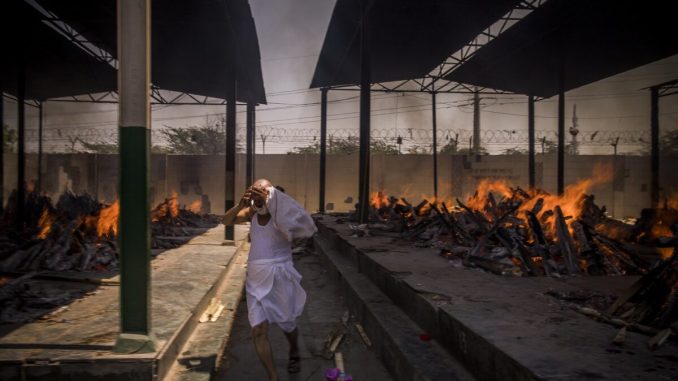
NEW DELHI—Delhi’s biggest crematorium ground, the Nigam Bodh Ghat, has seen a rapid surge in cremations in the last week. On April 24 there are dead waiting in the ambulances outside; dead being carried by family; some being laid on the pyre, and many burning, while rituals are performed. A pall of dignified silence lay over the entire scene.
On the main gate, towards the left, there’s a notice from North Delhi’s Municipal corporation that lists seven hospitals whose COVID casualties are allowed cremation inside. The notice further said: “Cremation inside Nigam Bodh Ghat is allowed between 9 a.m. and 8 p.m. every day.” On the right was a cautionary note to maintain one’s distance, next to which was a corpse on a stretcher.
Situated right on the bank of the river Yamuna, the Nigam Bodh Ghat (ghat means bank) had at least four layers of cremations happening on Saturday.
There were bodies burning right on the bank, a row of them burning on constructed spaces above, some of them burning a few steps up towards the right under a shed, and many of them burning on the roofed ground that through multiple gates leads to the main road outside.
“On Monday 40 bodies came here. On Tuesday it was 65 and today it has been 120 [as of 3.30 pm],” said Varun Chauhan, a shopkeeper outside the gates selling material needed for cremation.
On April 24, Delhi recorded 357 COVID deaths, the highest on any day since the pandemic broke more than a year ago. It was just four on an average day in March.
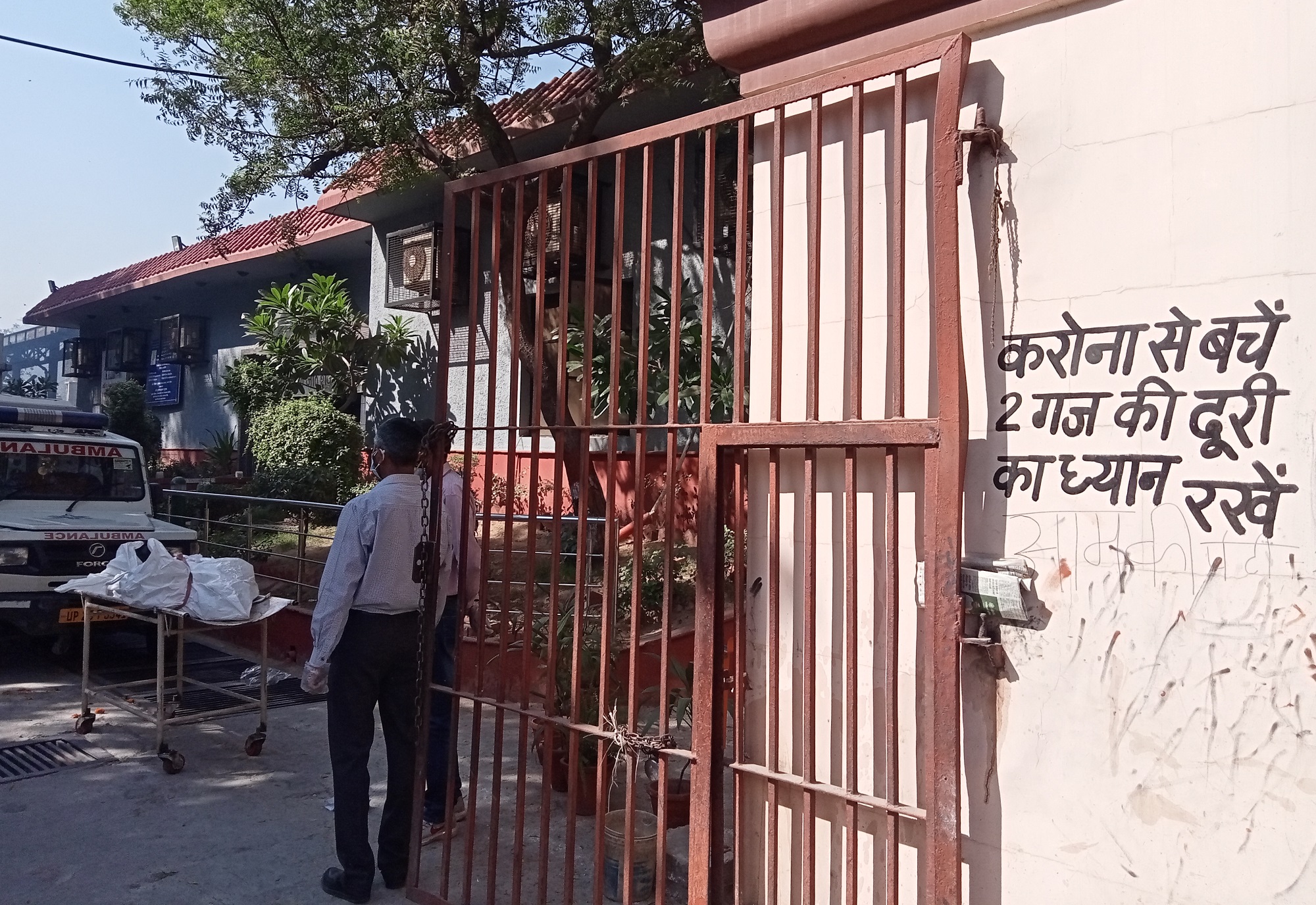
Prime Minister Narendra Modi held a virtual meeting on April 23 with the Chief Ministers of the various states most affected by COVID-19 to ensure coordination to deal with the crisis. On the same day the country set a world record with the highest spike of new cases in a single day since the pandemic began, with 3,32,730 cases recorded. The overall current death toll stands at 192,311.
“Delhi’s situation is really bad. The administration has failed. There’s panic among the people. Rumors aren’t controlled about vaccines and oxygen cylinders,” Sunil Kumar Aledia, a social worker, told The Epoch Times. Since the lockdown was imposed on April 16 Aledia has helped provide food and oxygen cylinders. He also helps identify and contact the families of unclaimed bodies and helps those needing assistance with cremation.
The Epoch Times followed Aledia all through his COVID-relief work from morning till dusk on April 24 to understand the situation on the ground.
“Delhi’s Chief Minister Arvind Kejriwal mentioned earlier to the public that the state’s oxygen stock was sufficient only for two days. He shouldn’t have talked this way. It spread a lot of panic. He still had two days to coordinate,” said Aledia chiding Kejriwal for blaming the federal government. “The CM [Chief Minister] has his own responsibilities.”
Aledia, who is also the executive director of the Centre for Holistic Development, has four oxygen cylinders and two oxygen concentrators that he rotates among those who reach out to his organization. On Wednesday, he got about 150 distress calls for oxygen cylinders.
“There’s a lot of panic about oxygen cylinders. From all the calls that we receive, everyone isn’t in need. Sometimes people call us for a friend’s friend’s friend. There’s actually a lot of panic,” he said. The government should work to reassure people and calm them down, he said.
“People are looking for beds and oxygen cylinders. These are materials. The reality including people’s response to the situation is linked to their mental state of being,” said Aledia.
On Thursday the Indian Air Force’s C-17 and IL-76 airlifted cryogenic O2 containers from its station to a recharging facility in the country’s east, and Modi urged the state heads to come together and work towards a seamless supply of oxygen and medicine. Modi said the federal government is working to increase oxygen production.
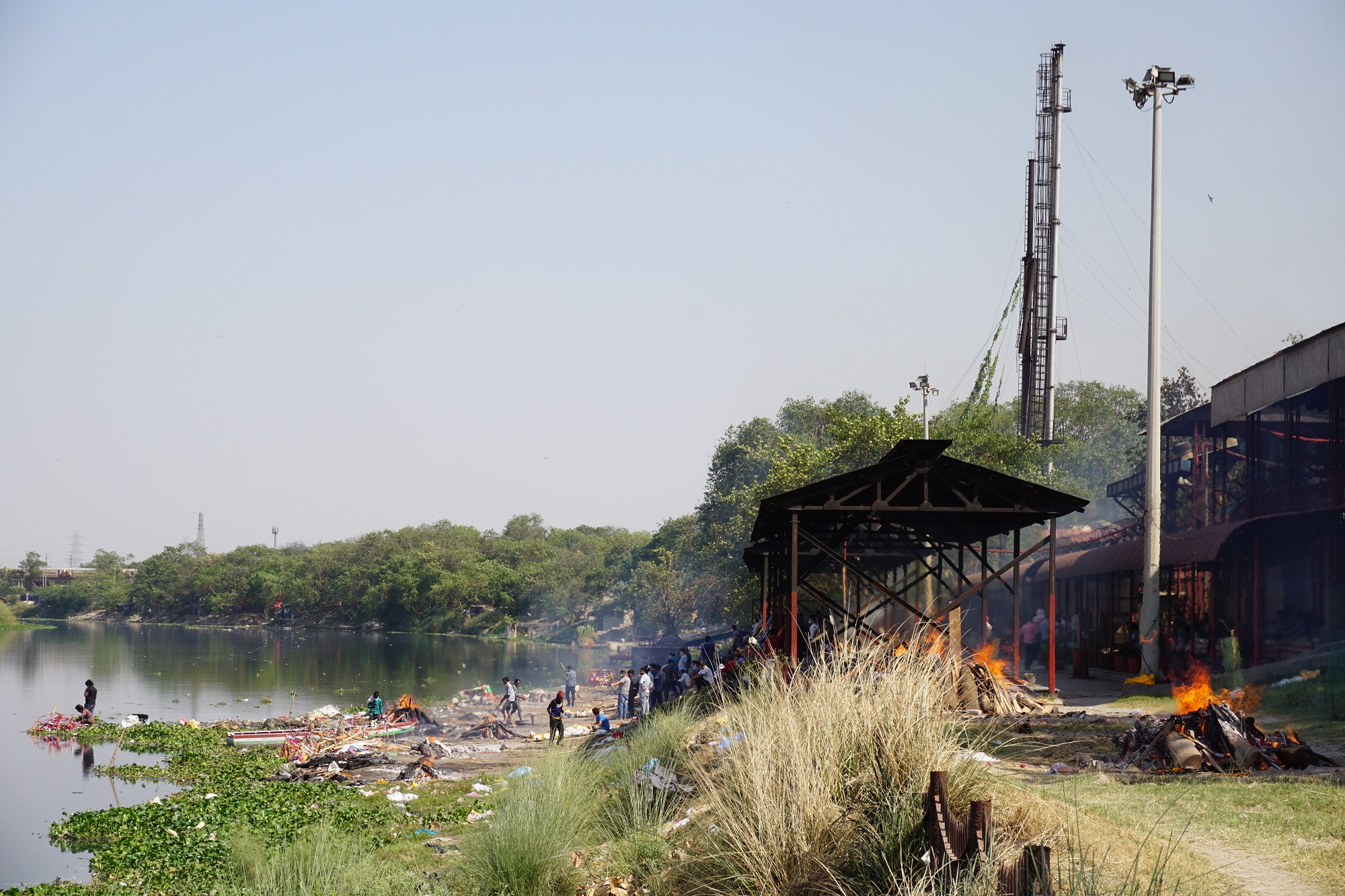
The scarcity of oxygen cylinders has been a big crisis in the country. Last week, there were reports of cylinders being sold on the black market, as well as stories of good samaritans providing free supplies at the cost of their personal benefit.
There’s a lot that the good samaritans are doing in the country—on the same road as the Nigam Bodh Ghat, Aledia’s bike wades through a crowd of over 4,000 homeless, daily workers who lost their jobs during this month’s lockdown.
“Food comes here at 11 a.m., 2 p.m., 7 p.m., and 9 p.m. and there are two good samaritans who serve food at 6 a.m. and 11 p.m.,” said Aledia. He coordinates over eight charities and multiple individuals for the supplies at the site, which hosts five working shelters for the homeless, each of which can house a maximum 30 people. But there are 5000 who sleep under the open sky at the location, many on the footpaths on both sides.
None of the shelters has a kitchen, and the food comes cooked and packed. During last year’s lockdown, Aledia’s group served food to over 20,000 every day around Delhi.
On his way to the Nigam Bodh Ghat, Aledia stopped at the Lok Nayak Jai Prakash Hospital, a centrally located government-run hospital, to help with the cremation of Chitra Nigam, a 66-year-old retired female teacher who died there due to COVID.
“Her whole family is COVID-positive and can’t do her cremation. So they asked us for assistance,” said Aledia, while he called the family on phone for the government-approved identification card. “We daily get 1-2 calls seeking such assistance for COVID cremations.”
“Yesterday we assisted with the cremation of an 80-year-old father of a gazetted [high-ranking] officer employed with the government. They sought our assistance because there was a lack of space in the crematoriums.”
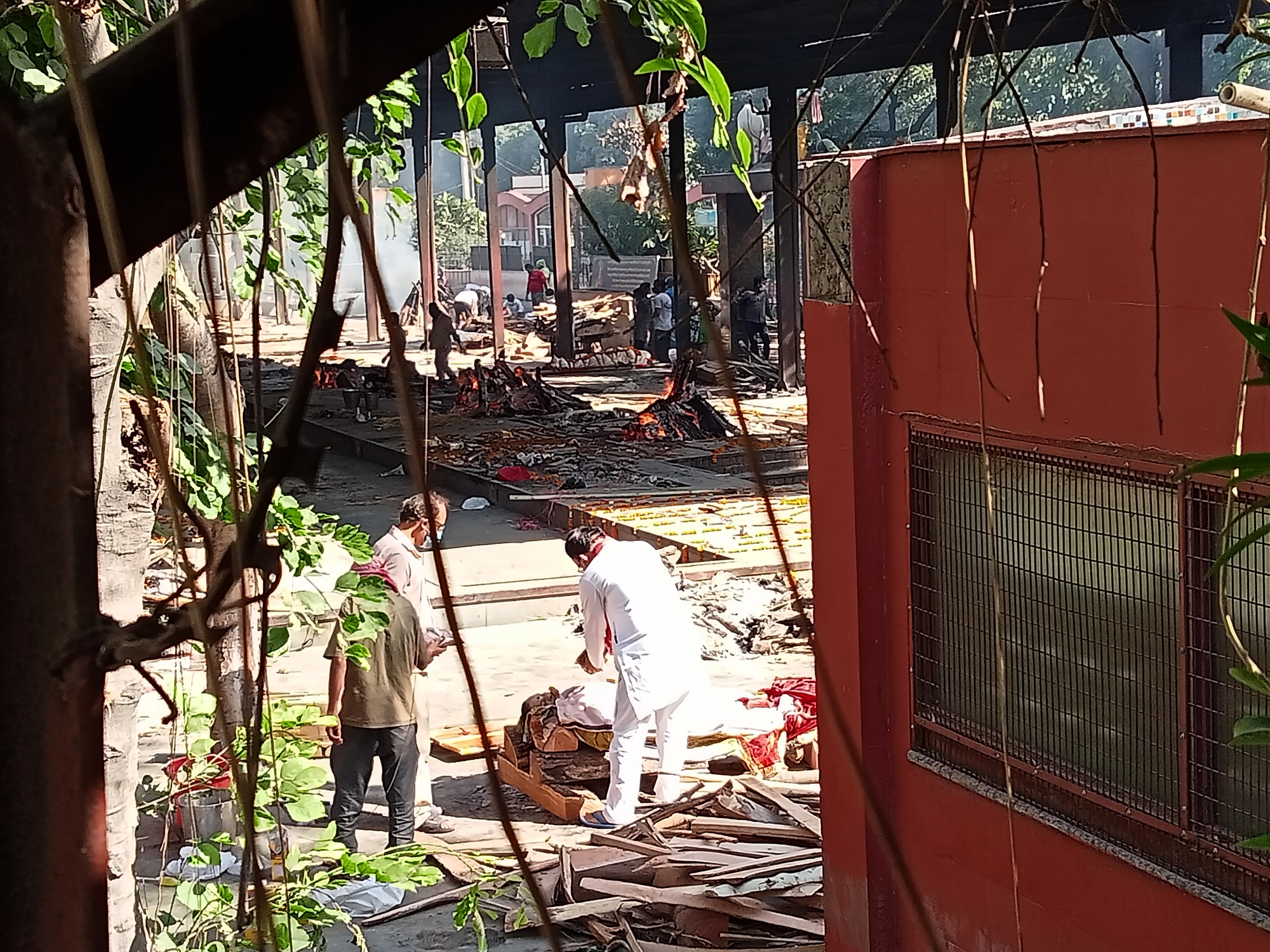
Outside the hospital Aledia met his mentor, Indu Prakash Singh, 61, a noted social worker, a poet, and a writer who met various challenges to find an oxygen ambulance and a bed for his wife on April 24.
“The ambulance people weren’t prepared. So I had to pay rupees 15,500 ($207) one way to transport my sick wife to a private hospital,” Singh told The Epoch Times over the phone on Sunday, complaining that the regular charges are 5000-6000 rupees($67-80).
“My wife was in another hospital. Yesterday morning the hospital made an announcement that it has no oxygen supplies and asked all, over 200 COVID patients, to leave the hospital. Our relatives started looking for a bed for my wife, and finally one of her cousins found one in a private hospital,” said Singh. He alleges there is a politically motivated lack of support from the federal to the state government in the matter.
“My wife is the CEO of an Education Society (charity) that supports 2000 village girls,” said Singh. “She’s doing better now.”
After meeting Singh, Aledia who disagrees with his mentor’s political perception of the situation, drove two miles to the mortuary of the Maulana Azad Medical College where Nigam’s body was placed.
Outside the mortuary, under beautiful spring trees, a few people walk in PPP suits while five ambulances are parked outside. Discarded and used PPP suits are lying in a few corners on both sides of the road, which Aledia laments, shaking his head in disbelief.

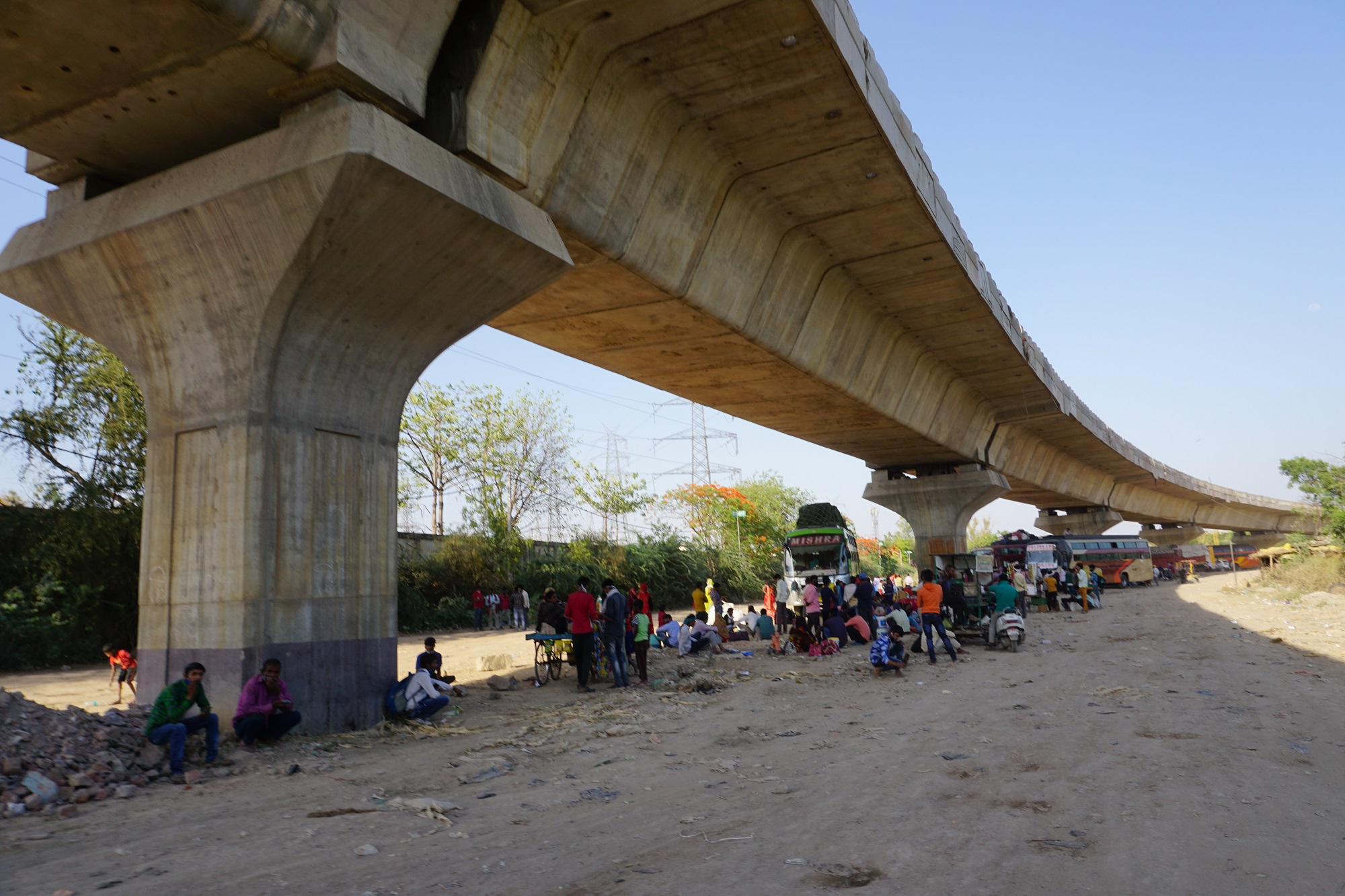
“They are asking me for an authorization letter from Nigam’s family along with her identification card and her son’s identification card. They will then let me cremate the body,” said Aledia, describing the conversation that he had with the mortuary authorities. He was able to get Nigam cremated on April 25.
From Nigam Bodh Ghat, Aledia drove 7 miles to Sarai Kale Khan, a suburban region with multiple construction projects. He was on his way to another cremation ground that use both cremation with firewood as well as an electric crematorium.
All along the way from the main road to the crematorium, his bike rode through crowds of workers sitting outside private buses waiting to travel to their homes in the adjoining states amid the lockdown.
Some of them crowded around the food carts selling water and local savories. Most were wearing masks. Some are carefree, and almost no one practiced social distancing.
Inside the big gate of the Sarai Kale Khan cremation ground, construction workers were hurriedly building 16 new cremation platforms on the green lawn while the fire from freshly lit pyres rose through the walls of an inner ground.
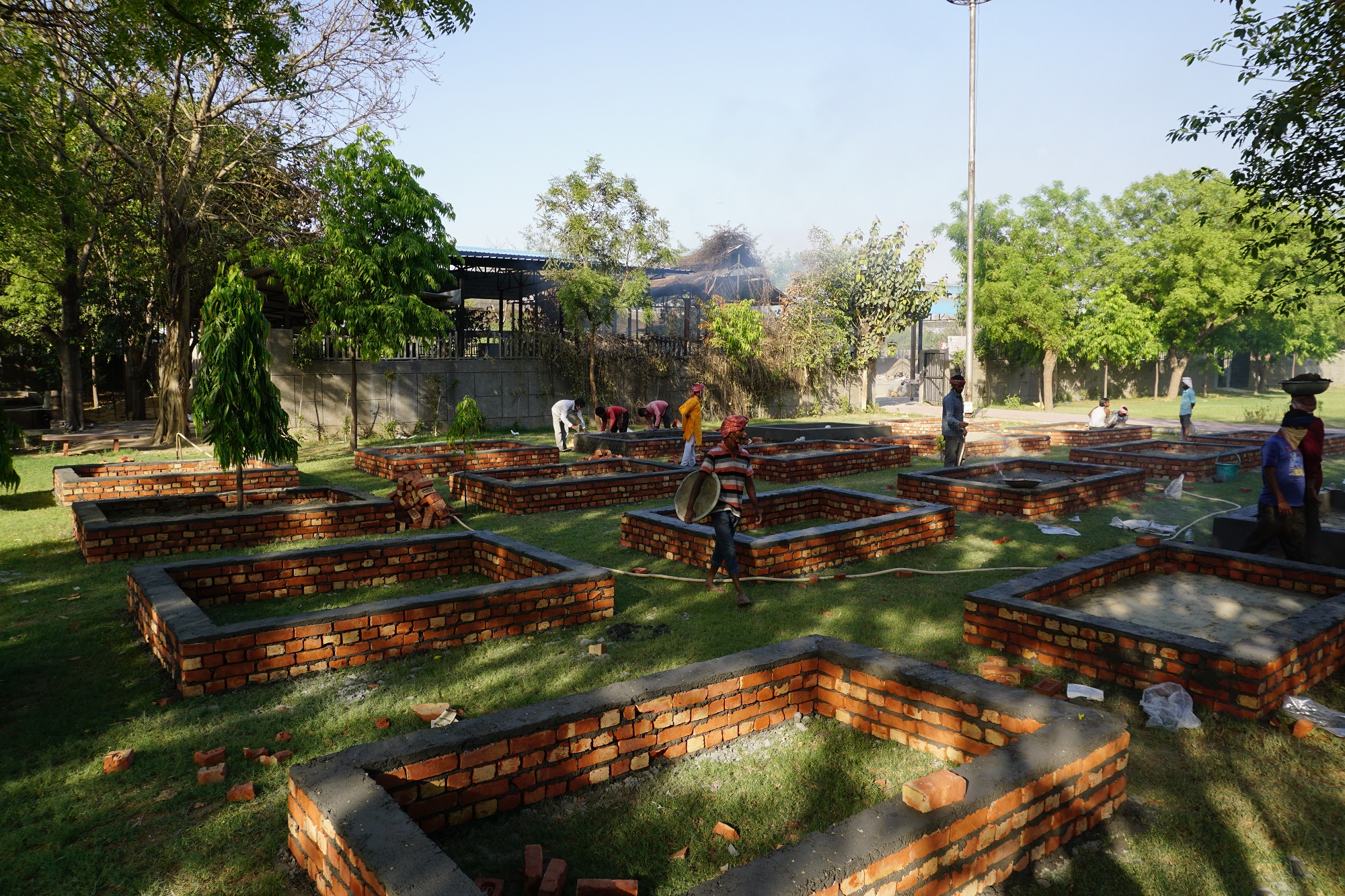
Outside a few COVID bodies waited for their turn in the parked ambulances, while a few people strolled around in blue and white PPP suits. “Bio-hazardous waste” lay littered on both sides of the entrance while wood for pyres was stocked under a shed.
Aledia drove straight to the electric crematorium at the rear of the premises—four corpses waited on the ground near the staircase of the crematorium, under a big tree. “Don’t panic. Be patient,” Aledia told The Epoch Times.
Aledia approached the crematorium caretakers. “These are not COVID bodies. They are unidentified bodies left here by the police,” said a caretaker who refused to be identified. There were two chambers inside one of which wasn’t working on Saturday.
Aledia said he would approach the authorities and make sure it works in the next few days.
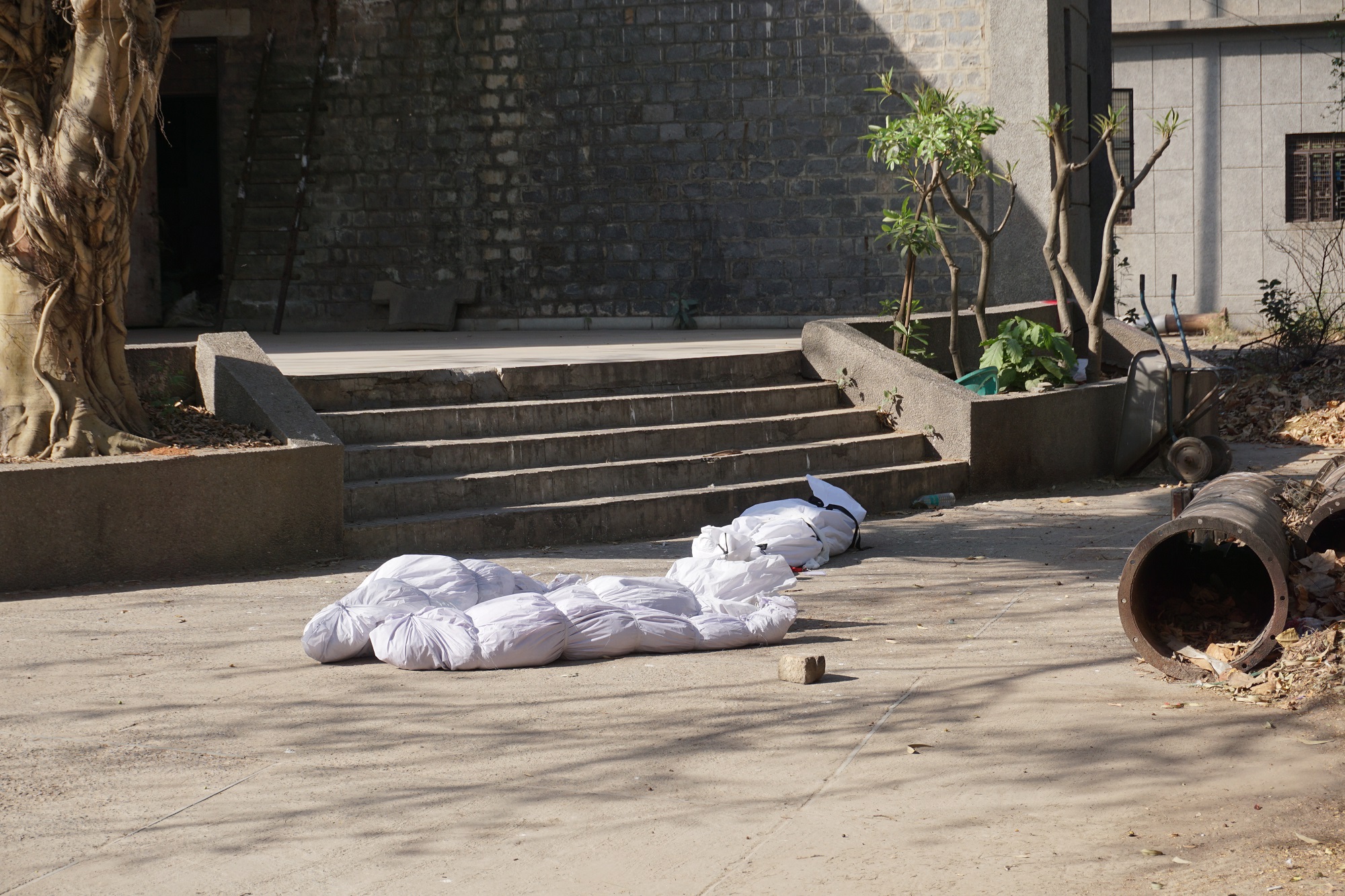
Food is distributed at Nigam Bodh Ghat in New Delhi on April 23, 2021. (Venus Upadhyaya/Epoch Times):




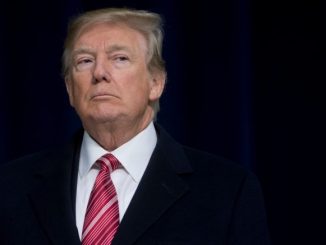

Be the first to comment